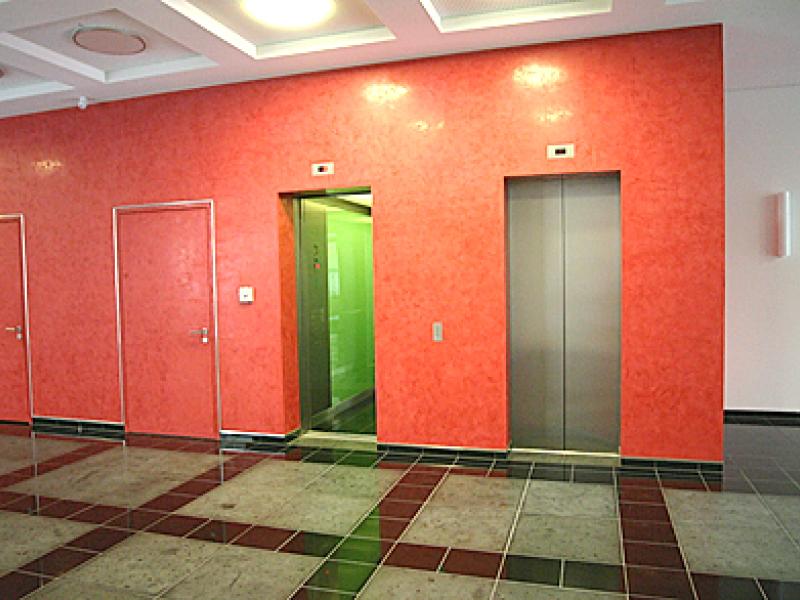During the last years, several elevator companies deleveloped so-called destination call systems for controlling passenger elevators in high-rise buildings. In contrast to conventional systems using a 2-button control, the passenger enters his destination floor already at the landing floor. Elevator industry claims that destination call systems offer increased performance, making them suitable for instance for upgrading buildings whose elevator system are not capable of handling the passenger traffic. However, there are almost no scientific studies on the performance potential of destination call systems and it is only little known on the control algorithms used by the companies and how much they actually exploit the potential.
How is it possible to measure the "potential" of an elevator system? An important performance parameter of the elevator system is the (handling) capacity, measuring how many passengers can be served in a given amount of time. The handling capacity is a central notion for developing and planning elevator systems. It is yet unclear how much it increases by switching from a conventional to a destination control system.
Another increasingly important aspect of elevator control algorithms is the energy demand induced by their control decisions. It is an open question on how a group of elevators should be controlled to obtain energy-efficient operation and whether destination control systems offer advantages for this.
In this project we pursue three goals. We want to obtain
sound comparisons of the capacity offered by an elevator system, depending on the kind of control system and control algorithm employed,
results on the energy consumption depending on the control decisions,
destination call control algorithms that offer the maximum capacity, and if possible, operate energy-efficiently.
All three goals pose significant research challenges in order to obtain practically relevant results.
